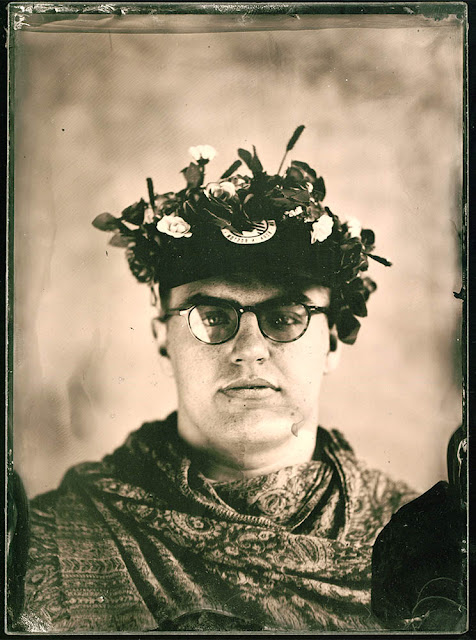A year or two ago I made a prototype scanner-camera. It was a simple proof-of-concept lash-up using a Canon flatbed scanner, some foam board and a magnifying glass lens. With a little tweaking* I made it work well enough to show the idea had promise. The mark 2 'posh' version still hasn't been made but I've kept the original in its crude sticky-taped form to use in UCA photo workshops.
*
( full article another time - I promise!)
 |
| The Scan-O-Cam Mk 1: Materials: Canon LIDE scanner, foam board boxes, magnifying glass, sticky tape. |
This year's BA Photo workshop on experimental cameras was a great success. Everyone got into the spirit of making, hacking and creatively experimenting with all sorts of stuff and some really great pictures were made on the scanner camera.
COLOUR:
The scanner isn't designed to work with a transmitted light image. It fires rapid flashes of red, green and blue light at the platen surface, expecting it to be reflected back by the document it's scanning. I partially disable the light so the sensor sees the image produced by the lens instead. This is effectively monochrome but by doing three scanning passes with a red, green or blue filter in turn a composite colour image can be made. - Thanks to Greg Jones for his work on the colour combination technique.
Here's an example. Three scan-photos of Larry were made in succession:
 |
| red filter...........................................................green filter.......................................................blue filter |
The camera and subject need to stay still and in register for each scan. - not easy for portraits!
The red, green and blue image files are combined by pasting into the R,G,B channels in Photoshop (I will publish a more detailed article later) and a colour image results:
 |
| Red, green and blue images combined in Photoshop |
MOVEMENT:
The scanner moves horizontally and relatively slowly even at low resolution. This gives a lot of scope for deliberate movements during the exposure. Cue some really innovative and interesting experiments:
If the subject moves in the opposite direction to the scan it appears compressed:
 |
| Meg moved in the same direction as the scan so she's compressed while the background is unaffected |
Standing still but jumping sideways successively gives a multiple subjects:
 |
| " Lots of Meg" - I think this one is my favourite. |
Moving up and down during the scan distorts as zigzag lines:
 |
| Truly surreal... Josh waved both arms and legs during the scan |
 |
| Another great image - plus what appears to be an insect on the scanner glass? |
Thanks to everyone in the workshop for these images - Some very experimental and original ideas. Well done!




















